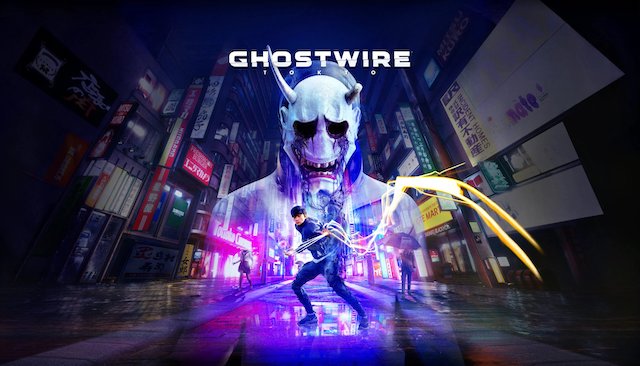Game Review: Ghostwire: Tokyo (Xbox Series X)
From developer Tango Gameworks and publisher Bethesda Softworks comes the action-adventure, first-person game, Ghostwire: Tokyo. An imaginative and folklore laden experience that will give hours upon hours of enjoyment. Only let down by a lack of depth to the story and repetitive, uninspired combat.
Played from the first-person perspective and set within Shibuya, a ward of Tokyo, players take on the role of Aktio as he is involved in a traffic accident. Knocked unconscious by the accident, Akito is possessed by a roaming spirit named KK, who needs a body to complete his mission.
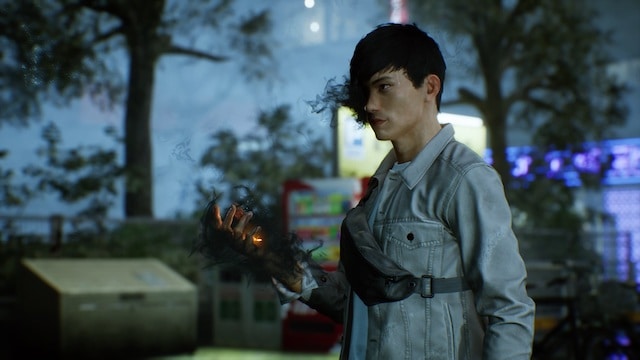
As Akito comes around to find he is no longer alone in his head, a mysterious fog rolls in turning everyone caught within it, into a spirit. If that wasn’t insane enough, terrifying creatures known as ‘visitors’ start to appear and capture the spirits in cages.
Akito, unaffected by the fog, thanks to the invading force of KK, can only watch on in confusion. Watching on in horror as the visitors begin to collect spirits and a mysterious man in a Hannya mask appears on the digital screens declaring his intention to bring about the end times by opening a gateway between the worlds.

KK, caring nothing for Akito, attempts to fully take over the young man, but he is made of sterner stuff and fights back. Realising that they will have to work together, KK gifts Akito with supernatural powers to fight off the visitors and assist him in getting to the hospital where his sister, Mari, is in a coma.
Arriving, Akito finds the man in the Hannya mask is already there and has chosen Mari for a ritual. A fight ensues, that Akito loses, but KK saves him and they escape to his safe house. There, KK reveals that he was part of a team of investigators who tried to stop the Hannya masked man, but failed. Now, he needs Akito’s help to stop him once and for all. Whereas Akito needs the help of KK to save his sister.

Explore the neon-drenched city, save the spirits off those killed by the fog, defeat the multitude of visitors that roam, uncover interesting folklore, improve your abilities, complete varied side missions, and put a stop to the villain’s plan. There’s a lot to do in Ghostwire: Tokyo and it will keep players busy for tens of hours.
If there’s one part of Ghostwire: Tokyo that can’t be faulted, it is the location and how much fun it is to explore. Especially when you gain abilities to really move around. The setting is lovely to look at. From bright and sleek modern architecture, to rows of old houses, a vibrant subway, creepy schools, abandoned tower blocks, ancient graveyards, and so much more. Ghostwire: Tokyo is a sight and forty hours in, it still delights.
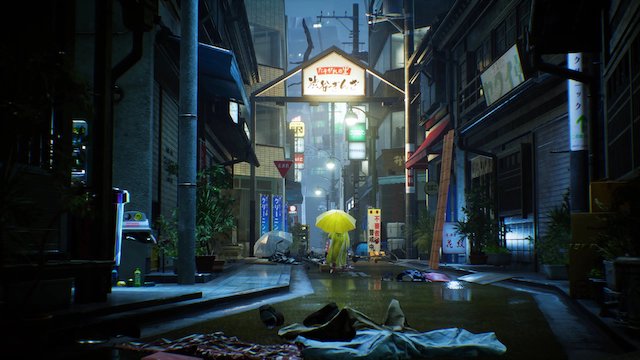
If you do find yourself that far into playtime, chances are it’s because you’re working your way through the extensive number of collectibles and side missions that work to distract you from the main story. Everything you pick up, read, or complete has a purpose as they gift you with new abilities or experience to level up and become more powerful. What does seem extremely daunting at first, the sheer number of things to find and complete, ends up being one of the most fun aspects of the game.

It’s easy to sink hours into just roaming the streets and roofs saving spirits, praying at shrines, finding audio recordings, and so much more, rather than play the main story. Which is a bit of a problem, as the overall narrative just isn’t that engaging. It also happens to be quite short and culminates in a disappointing final boss.
In fact, all the bosses are disappointing. Requiring little more than the same actions players have been using to take down the different visitors throughout the game.
Combat is magic based and looks particularly cool. Akito using his fingers to shoot magic made up of elemental powers. There is the quick-fire wind, the group assault of water, and the intense power of fire. Switching between each is simple and fluid, making some of the busier fights feel quite action packed.
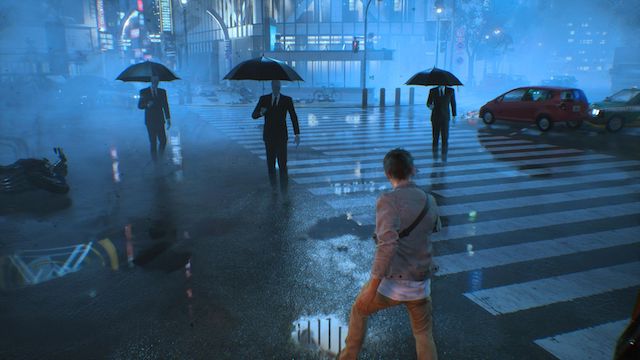
There are some enemies that require a bit more work, such as blocking and waiting for your opportunity, or utilising talismans, but it won’t take long for most players to become adept at combat. Even if the power aiming mechanic and sluggish response time for movement means it’s not always the most fun thing to do in the game.
Eventually, players will find themselves ignoring groups of visitors just to avoid combat. By the late-game point, all originality within the enemies has gone, and players will know exactly who to avoid and who they can take down easily. The headless school girls? No problem. The faceless and suited tall men? Easy. The slit-mouthed scissor woman? Run away as fast as you can.
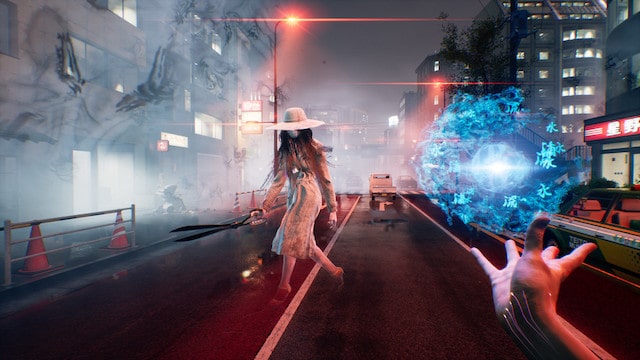
There are some nightmarish moments in the game, horror-like, but never fully invested in this side of things to be called a horror game. Regardless of some of its creepy moments, and there are some excellent side quests that deliver on this, Ghostwire: Tokyo is an action-adventure game through and through.
One that does leave an impression, even if it’s far from perfect. The developers clearly have a lot of imagination and put a ton of effort into making this surreal and fantastical world as detailed as possible. It is a lot of fun to play, and has many satisfying moments.
A better story, better boss designs, and improved combat would have made this one of the best games released this decade. That being said, it’s well worth checking out for the exploration and folklore elements alone.
Ghostwire: Tokyo (Xbox Series X)
-
The Final Score - 7/10
7/10

